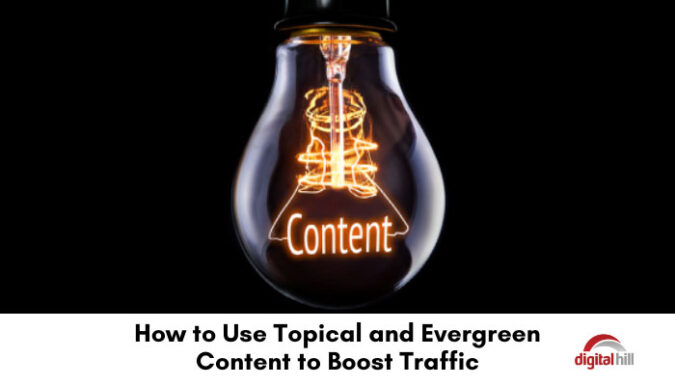How to Use Topical and Evergreen Content to Boost Traffic

The success of any content marketing strategy and digital marketing in general primarily depends on the chosen strategy. If you have been in the content marketing space, you certainly understand the struggles of creating long-lasting content that attracts organic traffic. Catching the right audience’s attention and driving organic traffic over a period is daunting. If you’ve been struggling with this, center your content marketing strategy on topical and evergreen content.
What is Topical Content?
Also called seasonal content, topical content offers relevant, timely, and targeted information to capture the readers’ attention. Topical content covers recently discovered or unfolding stories, trends, and news. This content can be events-based or time-based. As such, content marketers can plan for this content before it happens. Topical content includes information covering Christmas preparations, summer, St. Patrick’s Day, New Year’s, and more.
Content marketers can leverage ephemeral topical content, which is primarily visual content, including images, videos, and GIFs, that last only for 24 hours. Ephemeral content aims to elicit an immediate response from readers with FOMO (fear of missing out). This type of content creates a sense of urgency.
Besides increasing traffic, topical content has a high potential for sales. Posting content covering hot and currently trending topics increases opportunities for sale. For instance, you can write an article about the best summer dresses during the summer period. However, success with topical content takes time, as you have to build your readers’ trust. Beating competition in the content marketing realm can also prove challenging.
What is Evergreen Content?
Evergreen content is search-optimized, timeless content designed to remain relevant for a long period. Unlike topical content, evergreen content remains relevant even years after publication and grows traffic over time. Evergreen content:
- Should address common industry pain points
- Feature keywords for search engine optimization
- Should be valuable to your target audience
- Have trusted references and citations
Common examples of evergreen content include FAQS, guides and tutorials, listicles, how-to articles, and interviews.
Using Topical and Evergreen Content to Boost Traffic
The following tips can help digital marketers increase traffic using topical and evergreen content.
Plan ahead
Early planning is a major determinant of content marketing success. By planning early, you can avoid last-minute stress and create content that perfectly resonates with your audience. With this, you can plan properly, craft, and launch topical and evergreen content without rushing. That aside, it can take days before Google can index topical content. Therefore, you might miss the opportunity if you post a week before the event or topic.
Have a content planning template
Having a template simplifies content creation, especially because you won’t have to start from scratch every time. With a template, all you need is to organize ideas and start writing. A template also boosts productivity and makes it easy to track content schedules.
Balance both content types
Finding a perfect balance between evergreen and topical content is important. While topical content can deliver quick results, it doesn’t guarantee long-term success. On the other hand, evergreen content cannot jump-start the readers’ or potential customers’ interest.
Use the right tools
Digital marketing tools, such as Google Ads and Google Trends, provide valuable insight that can help you improve your content strategy. For instance, Google Trends provides signals of events gaining momentum, rising, or falling, allowing you to time your posting schedule.
The Bottom Line
Topical and evergreen content is beneficial and drives content marketing strategy success. They complement each other perfectly. While topical content attracts organic traffic and increases brand awareness, evergreen content boosts SEO and keeps visitors glued to your site. As such, you should consider mixing both content types for digital marketing success.